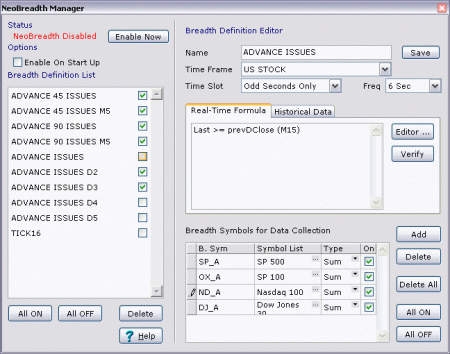Trading With Tick Index: Introduction
Tick Index was originally created by New York Stock Exchange. It is a statistical measure of the current state of the stocks traded in the exchange as a whole. It has many unique properties making it one of the most powerful indicators for trading stock index derivatives. Yet, it is also one of the trading tools that is most difficult to master due to its seemingly erratic movements. This combination of qualities is probably the reason why tick index has been misunderstood by many traders.
Constructing Tick Index
The classic NYSE TICK index is the sum of an assigned score to all the actively traded stock so far during the trading day. The score for each stock is defined by the way how the last trade happened.
If a stock has an uptick, meaning that it traded at a price higher than the previous trade, or, if the previous trade itself was an uptick, it is assigned with the score of +1.
If a stock has a downtick, meaning the it traded at a price lower than the previous trade, or, if the previous trade itself was a downtick, it is assigned with the score of -1.
By taking the sum across all the stocks active during the day (i.e. at least traded once), you get the current value for tick index.
Boundaries of Tick Index Range
For example, say, on a particular trading day, NYSE has 3500 stocks traded during the day. The Tick index value being reported during the day would have a possible range of -3500 to +3500. To get Tick index to report +3500 during the day, all the stocks active at that moment must have their last trades being upticks.
Historically, however, those extreme levels never happened since the introduction of Tick index. As you may have noticed, each stock is assigned a value of +1 or -1 which would offset each other easily. Using our example, if just 1 stock is having a downtick while all the other 3499 stocks are having upticks, the Tick index value reported would be +3498 only. As majority of the time the stocks within a stock market do not move in unison, the Tick index value has a much smaller range in real life.
Variations of NYSE Tick Index
Since the late 1990s, due to popular demand, other exchanges started to offer their own versions of the Tick index for tracking the stocks traded in their exchanges. The most popular one is still NYSE Tick index because of its useful properties for trading the Emini S&P500 and SPY ETF. The other popular tick indices are the ones for Dow Jones Industrial Average, NASDAQ, and Russell 2000.
The Dow tick index has the symbol of TIKI and is very famous for its use as a quick proxy for possible buy/sell program execution when it hits its extremes. Unlike the NYSE Tick Index, Dow TIKI can easily reach +30 and -30 due to the small size of its basket. Dow Jones Industrial Average contains a total of 30 stocks only.
NYSE Tick Index In A Typical Trading Day
Following is the chart of a typical trading quiet day. It is the chart of 1-minute Emini S&P future in the top pane and 1-minute NYSE Tick Index in the bottom pane.
















Thanks for this series. Perhaps this should be part of the Market Breadth Primer in terms of organization ….
This is different. It is going to be a series by itself.
Hard core instructions on using tick indices for daytrading.
This is great. $TICK is the one reason I still even try to trade YM/ES etc. Else I would just stick to grains.
Hi Lawrence, can I understand the TICK Index construction in a bit more detail?
Let’s say a particular data feed provide calculates their index every 30 seconds.
If a stock has NOT traded in that 30 sec window (but has traded at some point during the day) should they count that stock in the Index based on if it was last an Uptick or Downtick?
What about if the stock HAS traded in that 30 sec window, but it’s price is unchanged from the previous trade?
You say a stock should NOT be included in the TICK Index if it has NOT traded today. So what happens at 9.30am (the start of the day) as no stocks have traded so there is no base to determine if the first trade is an Uptick or Downtick. Or is it that at 9:30:30 (the first Index calculation for the day) it should look at what stocks traded in the first 30 seconds and compare the trade price to their last trade price from yesterday?
Should the TICK Index be calculated strictly on trades between 9.30am and 4.30pm? As I am lead to believe stocks can actually start trading as early as 4am US ET.
I suspect a lot of variation of the TICK Index between datafeed providers is due to the difference between how they answer (apply) the above questions of mine. As an example have a look at Sierra Charts algorithm definition (in my view they provide the most comprehensive description of how they calculate it), but do you agree with them?
https://www.sierrachart.com/index.php?page=doc/SCMarketStatistics.php#CalculationsAlgorithms
They just copied the standard definition there. nothing new =P